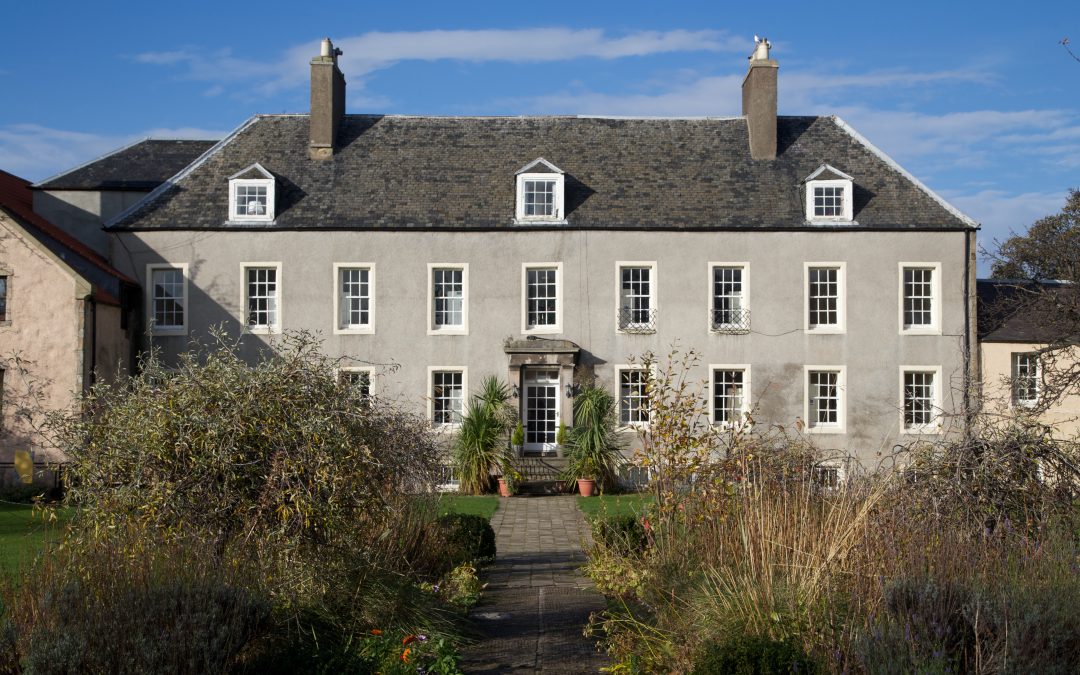The gardens at Cockenzie House are a beautiful sight to behold. They cover over 2 acres of land and are home to a variety of plants, trees, and wildlife. Visitors can take a leisurely stroll through the gardens and enjoy the peaceful surroundings. The gardens are also a popular spot for weddings and other special occasions.
Located in the charming coastal town of Port Seton, Cockenzie House and Gardens is just a short drive from Edinburgh. The house and gardens are open to the public and offer a unique glimpse into the history and culture of the area. Whether you’re interested in history, nature, or simply want to enjoy a relaxing day out, Cockenzie House and Gardens is definitely worth a visit.
Historical Background
17th Century Origins
Cockenzie House and Gardens is a historic mansion located in the coastal town of Cockenzie in East Lothian, Scotland. The house was built in the late 17th century by the Seton family, who were prominent landowners in the area. The original house was a modest structure, but over the years it was expanded and improved upon, becoming the grand mansion that stands today.
Cadell Family and York Building Company
Battle of Prestonpans
During the Battle of Prestonpans in 1745, the house was used as a hospital for the wounded. The battle was part of the Jacobite Rising, a rebellion led by Charles Edward Stuart, also known as Bonnie Prince Charlie. The Jacobites were successful in the battle, and the wounded soldiers who were treated at Cockenzie House were likely grateful for the care they received.
Jacobite Rising
The Jacobite Rising had a significant impact on the history of Scotland, and Cockenzie House played a small but important role in that history. After the rebellion was put down, the house was returned to the Cadell family, who continued to live there until the 20th century.
Overall, Cockenzie House and Gardens has a rich and fascinating history that spans several centuries. From its origins as a modest mansion to its role in the Jacobite Rising, the house has played a significant part in the history of East Lothian and Scotland as a whole.
Architectural Highlights
Cockenzie House
Hanseatic Barn
The Hanseatic Barn is a stunning example of a 16th-century barn. The barn has a slated conical roof and is made of stone. It was originally used for storing grain and other agricultural products. The barn now hosts events and exhibitions.
Grotto and Well
The Hecla Grotto is an enchanting feature of the gardens. The grotto is made of stone and shellwork and has stone seats. The well is located nearby and is a vital source of water for the gardens.
Garden Buildings
The gardens feature a number of beautiful buildings, including gazebos and a summerhouse. The mid-18th century gazebos are particularly noteworthy. The garden buildings are perfect for relaxing and enjoying the stunning views.
The walls, gate and gate piers, and cobbled court all add to the charm of Cockenzie House and Gardens. The Laird’s house tradition is evident in the design of the buildings and the use of local materials. The gardens are a wonderful example of 18th-century landscaping and are a delight to explore.
Gardens and Grounds
Walled Gardens
The Tripartite Walled Garden is separated into three parts, each with its own distinct character. The central section is home to a beautiful axial path, which is lined with rose borders. The east section boasts a well-maintained grass tennis court, while the west section is home to a variety of fruit trees.
Ornamental Garden Buildings
In addition to the Walled Gardens, Cockenzie House and Gardens also boasts a number of ornamental garden buildings. These include a stunning Victorian glasshouse, which is home to a variety of exotic plants. There is also a charming summerhouse, which is the perfect spot to relax and take in the beautiful surroundings.
Flower Beds
The flower beds at Cockenzie House and Gardens are a riot of colour, with a wide variety of plants and flowers on display throughout the year. The beds are carefully tended by the knowledgeable gardeners, ensuring that they always look their best.
Fruit Trees
The fruit trees at Cockenzie House and Gardens are a true delight. There are a variety of different trees, including apple, pear, and plum. The fruit is harvested in season and used in the kitchen to create delicious jams and preserves.
Transport and Accessibility
By Car
By Train
The nearest train station to Cockenzie House and Gardens is Prestonpans, which is approximately a 10-minute taxi ride away. From Prestonpans, you can catch regular trains to Edinburgh and other destinations across Scotland.
By Bus
There is a bus stop located directly outside Cockenzie House and Gardens, with regular services running to and from Edinburgh and other nearby towns and villages. The venue is easily accessible by bus, with services running throughout the day.
When planning your journey, we recommend checking the latest timetables and travel information to ensure that you arrive at the venue in plenty of time.
Local Amenities
Cockenzie House and Gardens is not only a beautiful and historic site, but it also offers a range of local amenities for visitors to enjoy. Here are some of the amenities available at the site:
Café and Gift Shop
The café at Cockenzie House and Gardens offers a range of hot and cold drinks, snacks, and light meals. The café has indoor and outdoor seating areas, so visitors can enjoy their food and drink in a comfortable and picturesque setting. The gift shop sells a variety of souvenirs, gifts, and locally made products, making it the perfect place to pick up a memento of your visit.
Studios
Cockenzie House and Gardens is home to a number of studios, where local artists and craftspeople work and sell their wares. Visitors can browse the studios and watch the artists at work, and purchase unique and handmade items directly from the makers themselves.
Events
Cockenzie House and Gardens hosts a range of events throughout the year, including art exhibitions, craft fairs, music concerts, and outdoor theatre performances. The events calendar is regularly updated on the Cockenzie House and Gardens website, so visitors can plan their visit to coincide with an event that interests them.
Surrounding Area
Cockenzie and Port Seton
Cockenzie and Port Seton are two small fishing villages located just a stone’s throw away from Cockenzie House and Gardens. The villages are a great place to explore the local culture and enjoy some fresh seafood. Visitors can take a stroll along the harbour and watch the fishing boats come and go or visit the village green, which hosts a variety of events throughout the year.
Harbour
The harbour at Cockenzie and Port Seton is a bustling hub of activity. Visitors can watch the fishermen bring in their catch of the day or take a boat trip out to explore the Firth of Forth. The harbour is also home to a number of local businesses, including fishmongers and seafood restaurants.
John Muir Way
The John Muir Way is a long-distance walking route that runs from Helensburgh in the west to Dunbar in the east. The route passes through Cockenzie and Port Seton, making it a great place to stop and explore the local area. Visitors can enjoy stunning views of the Firth of Forth and the East Lothian countryside as they walk along the trail.
Seton Castle
Seton Castle is a historic castle located just a short distance from Cockenzie House and Gardens. The castle was built in the 14th century and was once the home of the Seton family. Today, the castle is a popular tourist attraction and visitors can take a tour of the castle and its grounds.
Industrial Heritage
Cockenzie House and Gardens has a rich industrial heritage dating back to the 16th century. The site was originally home to salt pans, which were used to evaporate seawater and produce salt. Later, it became home to the Cockenzie Power Station, which was a major source of electricity for Scotland until its closure in 2013.
Salt Pans
The salt pans at Cockenzie House and Gardens were used to produce salt from seawater. The process involved boiling seawater in large pans until the water evaporated, leaving behind salt crystals. The salt was then collected and sold for use in a variety of industries, including food production and medicine.
Cockenzie Power Station
The Cockenzie Power Station was a coal-fired power station that operated from 1967 to 2013. It was capable of generating up to 1,200 megawatts of electricity and was a major source of power for Scotland. The power station was decommissioned in 2013 and has since been demolished.
The power station was connected to the nearby coal mines by a waggonway, which was used to transport coal from the mines to the power station. The waggonway was an important part of the industrial infrastructure of the area and played a key role in the operation of the power station.
The power station was also home to a team of glaziers, who were responsible for maintaining the large windows that allowed light into the building. The glaziers were highly skilled craftsmen who used traditional techniques to repair and replace the windows as needed.

